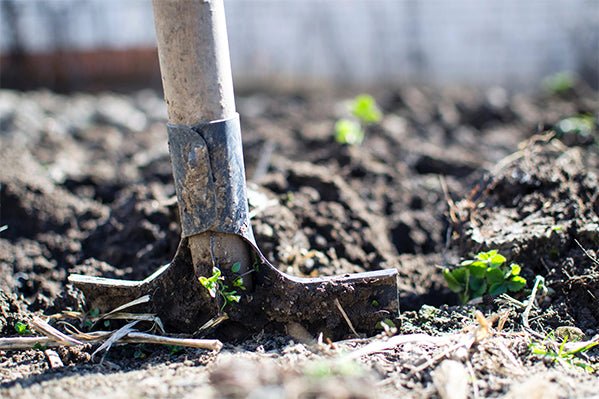
Organic Gardening Benefits: Food, Health, Happiness
One of the most effective and rewarding ways to ensure the food you eat is healthy is to grow it yourself. Losing weight is about so much more than cutting out chips and cookies; it is retraining your body to crave food that gives you the nutrients you need to thrive. Pair your weight loss efforts with organic gardening to make your journey twice as fulfilling.

We know that fruits and vegetables each provide us with different vitamins and nutrients – but how do they get there? It’s all about the soil. Before you begin planting, use a hoe to till the soil. This will get rid of the weeds that would otherwise be competing with your plants to soak up all the good stuff the dirt has to offer. When you purchase fertilizer from a local garden center, you’ll notice that most bags have an “N-P-K” ratio on the front. N-P-K stands for Nitrogen, Phosphorus, and Potassium. These are essential elements that plants require at different levels.
You can tell your soil has a nitrogen deficiency if the lower leaves of your plants are yellowing and the blooms are undersized. Stems may also appear spindly and the root system may not be strong enough to support growing plants. If you notice that your plants are not fruiting, apply fertilizer high in nitrogen. One cause of nitrogen deficiency could be decomposing material nearby. Since leaves and straw absorb nitrogen as they decompose, they may be taking away from the supply that growing plants have to draw upon.
Your soil may be lacking phosphorus if you notice that leaves are turning dark green, purple, or deep red rather than yellowing as discussed above. Extra carbohydrates will be building up in the plants, causing the dark discoloration. Also be sure to look for leaves curling inwards. Phosphorus is extremely important because it converts other nutrients coming to the plant into proteins and nucleic acids, which are necessary for growth. Soils that are too acidic or too basic will likely have issues with phosphorus. Unlike with a nitrogen deficiency, it is recommended to actually add more organic material to the soil when it is phosphorus-depleted.
Potassium is the last piece to the N-P-K puzzle. A lack of potassium in soil is identified by “scorching,” or a browning at the edge of the leaves. You might also see yellowing in the veins within each leaf. These scorched or “burnt” leaves may look like the plant has been underwatered, but don’t be fooled; it could mean that your soil is lacking this vital nutrient. The acidity of the soil is the key here. The plants’ roots are best able to absorb phosphorus at a level between 6-7 (slightly acidic). You can buy a pH soil testing kit at a local garden center.
Make sure you feed your plants as well as you are going to be feeding yourself. Remember – what you put in the soil at the top of the food chain will end up in you at the bottom. If you are gardening to lose weight, you want to make sure your plants are imbued with the proper vitamins and nutrients. Providing the soil with nitrogen, phosphorus, and potassium give the wonderful food you’re growing the power to keep you healthy, happy, and slim!
Ready to make a change in your life? Let's talk CLICK HERE

